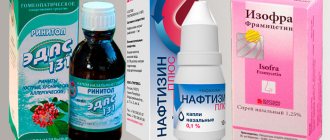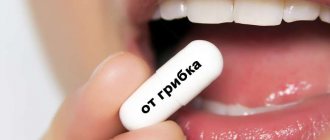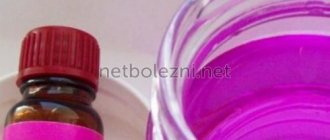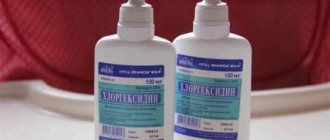Many representatives of the fair sex are familiar firsthand with a pathological condition when the intimate area begins to itch very much, causing the woman unbearable torment. Such a painful condition as itching in the perineum is associated with an abundance of nerve endings located in this area and irritated by any negative impact. When faced with such unpleasant sensations for the first time, women experience stress, since almost everyone associates them with indecent sexually transmitted diseases.
Brown discharge and itching in women: causes
It is important to observe at what period of the menstrual cycle the discharge of brown secretion from the vagina is observed. So, if a color change appears in the middle, then this indicates that ovulation has begun. During this process, the production of estrogen increases, which affects the walls of the uterus. As a result, blood particles may appear in the secretion. Such spotting should not cause alarm - this is the norm.
Brown discharge with itching appears, sometimes immediately after such situations:
- gynecological examination;
- rough sexual intercourse;
- inaccurate insertion of a tampon.
In such cases, the vaginal mucosa is damaged, which leads to a change in the color of the secretion and a burning sensation in the intimate area. There is no need to worry if both symptoms disappear 3-4 days after the incident.
A hormonal surge is also often the reason for the appearance of secretion of an unusual color and this happens during the period:
- adolescence;
- taking hormonal drugs;
- menopause.
Brown discharge after menstruation and itching have nothing to do with physiology, especially if the latter symptom bothers you constantly and intensely. Let's consider what can be suspected based on the appearance of one or both of these phenomena:
- Cervical erosion. Bleeding does not always appear, but only if the surface of the mucous membrane where there is erosion is damaged.
- Endometriosis. Metrorrhagia appears spontaneously, without any connection to the menstrual cycle, pain may not bother you, and there is no itching.
- Sexually transmitted diseases. Diseases are characterized by the presence of two complaints at once. There is both brown discharge and constant itching of the genitals. This is how trichomoniasis, chlamydia, and syphilis can manifest themselves. An infectious process is also indicated by pain in the lower abdomen, an unpleasant smell of secretions, and pain when urinating.
- Ectopic pregnancy. Almost black discharge can replace menstruation and stain underwear for a long time. Symptoms of normal pregnancy do occur, which should alert both the woman and the doctor.
- Tumors. The nature of the formations can be either benign or malignant. If the process has just begun, then the only symptom may be metrorrhagia, which is not caused by physiology, and subsequently pain and deterioration in general well-being are added.
Vulva
Itching of the vulva is most often accompanied by redness and swelling of the external genitalia. There may also be sharp paroxysmal pain both day and night, burning, and the appearance of copious discharge. The reasons for this condition may lie in the appearance of:
- infectious diseases;
- parasitic;
- non-infectious;
- mechanical irritations;
- skin diseases;
- pathologies of internal organs and blood;
- allergic reasons;
- mental factors.
To identify the causes of itching, you may need to consult not only a gynecologist, but also an endocrinologist or allergist. Relief from symptoms should not be short-term. The specialist will tell you how to treat the disease to completely eliminate unpleasant symptoms, and recommend the most effective medications.
Pink discharge and itching
The acidic environment of the vagina is nature’s idea to protect health from infections and bacteria that can penetrate from the outside. This happens normally, but if conditions change, the pH of the mucous membrane is also disrupted. At this moment, the immune system is not able to fight back against a bacterial attack, which leads to the development of various pathologies, resulting in itching, burning and pink discharge. Also called provoking factors:
- Severe stress. Constant worries negatively affect hormonal levels, which often triggers a whole chain of reactions in the body. This definitely affects women's health.
- Poorly selected intrauterine device.
- Long-term therapy using hormonal drugs for diseases that are in no way related to the reproductive organs.
- Improper functioning of the thyroid gland.
Most often, pink discharge and vaginal itching occur as a result of a combination of several pathologies, for example:
- vaginal dysbiosis and fungal infection;
- endometrial inflammation and chlamydia;
- cervical erosion and chronic diseases of the endocrine glands.
Vagina
Itching in the vagina is most often accompanied by an increase in cheesy discharge and the appearance of ulcers. The reasons for this uncomfortable condition may be:
- gynecological diseases;
- allergic;
- influence of other external factors.
Itching in the vaginal area is not considered by gynecologists as a disease. This is only a symptom indicating the presence of dysfunction in the body, which can only be identified by obtaining a complete clinical picture through appropriate tests.
A gynecologist will always tell you how to treat itching, burning, and redness in the intimate area in women.
Itching and spotting in women
The color of leucorrhoea always reflects the state of women's health. Discharge is of great diagnostic importance, so it is important to monitor not only what color it is, but also note its consistency, smell, and time of appearance. So, when bloody secretion is released from the genital tract, the doctor can diagnose nonspecific vaginitis. This disease occurs in such a way that only discharge can indicate its presence. In addition to the color, the smell also changes, it becomes distinctly unpleasant. Burning and itching are also almost always a concern.
The inflammatory process in the endometrial layer is also accompanied by abundant secretion with the presence of blood or pus. Endometritis often occurs like this:
- body temperature rises;
- leucorrhoea produces an unpleasant odor;
- The lower abdomen hurts and “pulls.”
Sometimes metrorrhagia, as bleeding is also called, can be a sign of pregnancy. Fluid with blood is released due to the attachment of an egg, which has already been fertilized, to the endometrium. You can notice a slight release of reddish secretion 6-7 days before the start of your expected period. For the rest of the period of bearing a child, such bleeding is a reason to go to the hospital without delay.
Redness in the groin in men
Redness in the groin is a cause for concern for many men. They are not always accompanied by itching. Often they indicate sexually transmitted infections, but they are also the result of sweating and tight synthetic underwear, under the influence of which the delicate skin in this area can turn red and itch.
A red rash on the scrotum sometimes signals syphilis.
Painless gray-brown, red-brown or yellow-brown spots appear as a result of a disease such as erythrasma. Men are more often susceptible to this disease due to increased sweating (hyperhidrosis).
Erythrasma and the causes of its occurrence
The causative agent of erythrasma (corynebacterium) has a very low infectiousness and is found in the microflora of a healthy person.
This bacterium has a low ability to cause disease; it multiplies in the upper layers of the skin, so only the superficial layers are affected. The course of the disease is chronic.
Transmission of corynebacteria occurs through the use of the patient’s belongings and other close contacts with the infected person.
Reasons contributing to the development of erythrasma:
- The use of aggressive washing agents and hard washcloths, which destroy the upper layer of the epidermis and weaken the protective properties of the skin in the groin;
- Neglect of personal hygiene rules;
- Weakening of the body’s immunity due to other diseases and medications;
- Increased sweating, living in humid and hot climates;
- Wearing tight-fitting clothing that rubs the body;
- Changing the pH level of the skin towards alkaline;
- Fungal infections and allergic dermatitis, as well as increased skin sensitivity.
The appearance of round spots of different sizes may indicate the onset of the disease. The colors of these spots range from yellow to red-brown, clearly distinguishable from the flesh color. Over time, the spots increase in diameter and combine into a new formation, in the center of which a darkening forms.
During the development of erythrasma in the groin, the patient does not experience any discomfort and often does not seek help in time. In summer, when it is hot, the disease progresses. Patients suffering from obesity or diabetes mellitus sometimes experience complications in the form of additional bacterial infections, diaper rash, and eczema.
Prevention of itching in intimate places
You need to follow simple rules:
- Compliance with the rules of intimate hygiene;
- If any type of disease is acquired, treatment must be completed in full;
- In case of unplanned sexual intercourse, it is necessary to use contraception;
- Proper nutrition and taking vitamins;
- Use of specialized intimate hygiene products;
- The underwear must be suitable in size and contain natural ingredients;
- An annual medical examination will help identify abnormalities in the early stages and prevent the development of pathologies.
Treatment of itching in intimate places with folk remedies
Folk remedies are extremely mild in their effects. Their beauty lies in their exceptional naturalness and the almost complete impossibility of overdose, plus they will help you quickly get rid of itching.
Recipes and methods of use:
- A bandage tampon is soaked in tea tree oil - applied very carefully. The oil is diluted with boiled water. In its pure form, it can burn the mucous membrane;
- Douching is washing the vagina. One tbsp. spoons of chamomile pour 200-250 g. boiling water After 30-40 minutes, the infusion is filtered through gauze, and the resulting liquid is used;
- Using soda and iodine - take 1 tsp per 1 liter of boiled water. soda, 0.5 tsp. salt, a few drops of iodine. Rinse 2 times a day after hygiene procedures;
- An ice cube will help to get rid of itching and burning; to do this, simply wipe the labia with it;
- Herbal lotions - 3 tsp. chopped sage, 1 tsp. Pour a glass of boiling water over calendula oils and chamomile flowers and let it brew for an hour. Mix with oak bark solution. Use the resulting mixture as a lotion against itching in the morning and evening;
- Herbal infusion - 0.5 tsp. dried marina root (powder) + 0.5 tsp. wild peony root is poured with 250 ml of boiling water. Place the infusion on low heat for 5 minutes, then leave for 3 hours. Use for douching or bathing;
- Aloe pulp - aloe leaves are scrolled through a meat grinder and cotton swabs are soaked in the pulp. They are used after douching to heal the vaginal mucosa. Insert tampons at night.
Folk remedies are good only as temporary help to relieve itching of private parts, but they cannot replace observation by a doctor.
Usually there are no clear instructions for the duration of the course and contraindications; here everyone is guided by the reaction of their own body to certain components.
Bacterial vaginosis
Bacterial vaginosis (BV) is a disease most often caused by anaerobic bacteria. Factors contributing to the development of bacteria: hormonal imbalances and poor hygiene. For example, tampons are very rarely changed, which become a breeding ground for microorganisms.
Poor hygiene
The disease is manifested by burning, pain (especially during urination), as well as copious gray or yellow vaginal discharge with a characteristic fishy odor.
Treatment: Bacterial vaginosis is treated with antibiotics given vaginally or orally.
Drug treatment
Each disease has its own treatment methods, which must be prescribed by the attending physician and select the correct course of treatment.
Vulvitis
For the treatment of vulvitis, the following are most often prescribed:
- Hydrocortisone ointment - prescribed if the disease was caused by allergic reactions or mechanical injuries to the vulva. Relieves itching, inflammation and swelling. Duration of use is 1–2 weeks. The average cost of 10 grams is 35 rubles ;
- Pimafucin is a topical antibacterial agent. It is used for all ages 4 times a day, but after the symptoms cease, it is used for another 4 days. The average cost of 30 grams is 315 rubles .
Hydrocortisone ointment
Pimafucin
Thrush
The most popular drugs for treating thrush are:
- Nystatin is a polyene antibiotic with antifungal action. Applicable to all age groups. Men use ointment 2 times a day for 10 days and tablets 4 times a day for 14 days, women use suppositories 2 times a day for 10 to 14 days. The average cost of tablets is 140 rubles , ointment 30 grams is 80 rubles and suppositories are 120 rubles ;
- Livarol - vaginal suppositories for women and children over 12 years of age. Belongs to the group of imidazoledioxolane derivatives, which acts on the synthesis of ergosterol. Use 1 suppository per day for 3–5 days. Average cost 650 rubles ;
- Terzhinan is a combination drug in the form of vaginal tablets. Average cost 370 rubles ;
- Orungal - used for local and systemic treatment, antifungal drug. Capsules are taken with meals 2 times a day, the course depends on the severity of the disease. In the form of a solution, the prescribed amount of the drug is drunk with water. The average cost of capsules is 2840 rubles , solution 3800 rubles .
Nystatin
Livarol
Terzhinan
Orungal
Trichomoniasis
For the treatment of t richomoniasis, the following are most often prescribed:
- Metronidazole has a pronounced effect against urogenital trichomonas. The course lasts 3-7 days, one tablet 2 times a day or one-time use - no more than two grams. Average cost 130 rubles ;
- Tinidazole is an antibiotic with antiprotozoal and antimicrobial action. Use 4 tablets of 500 mg 1 time per day; for children, the dosage is calculated based on body weight. The average cost is 70 rubles .
Metronidazole
Tinidazole
Gonorrhea
The following drugs are prescribed for the treatment of gonorrhea:
- Ceftriaxone is an antibiotic with a powerful bactericidal effect. The drug is available in the form of a powder for preparing a solution and is administered intramuscularly. The dosage is the same for everyone - 250 mg. The average cost per ampoule is 20 rubles ;
- Kirin
is a tricyclic antibiotic, in the form of an injection solution.
Injected intramuscularly into the upper outer quadrant of the buttock. For uncomplicated gonorrhea, it is used once a day. The average cost is 240 rubles .
Ceftriaxone
Kirin
Bacterial vaginitis
For the treatment of bacterial vaginitis, the following are most often prescribed:
- Clindacin - used in the form of suppositories. 1 suppository is administered per day for 7 days. Average cost 480 rubles ;
- Fluomizin is available in the form of vaginal tablets. The course is 6 days. It is necessary to administer one piece before bedtime. Average cost 730 rubles ;
- Miramistin is available in the form of a solution for irrigation. The penis is irrigated daily every two hours for 2 weeks. The average cost is 220 rubles .
Clindacin
Fluomizin
Miramistin
Endometritis
For the treatment of endometritis the following are used:
- Metronidazole is an antimicrobial drug. Tablets of 500 mg are used 2 times a day for 7 days. In agreement with the doctor, therapy is supplemented by the daily administration of suppositories in the amount of 1 piece per day. Average cost 140 rubles ;
- Ampicillin is an antibiotic from the penicillium group. Apply 6 times a day. Duration of treatment is 6-7 days. The average cost is 65 rubles .
Metronidazole
Ampicillin
Ureaplasmosis
The following drugs are used to treat
- Hexicon is a suppository containing the antiseptic substance chlorhexine bigluconate. The drug actively destroys ureaplasma without having a negative effect on the natural vaginal microflora. Suitable for children. Average cost 260 rubles ;
- Sumamed is an antibiotic of the macrolide group. Used orally 1 time per day. If used during lactation, breastfeeding must be stopped. The average cost is 460 rubles .
Hexicon
Sumamed
Urethritis
For the treatment of urethritis the following are prescribed:
- Amikacin is a broad-spectrum antibiotic. It is used based on the patient’s weight: 5 mg per 1 kg 3 times a day or 7.5 mg per 1 kg 2 times a day at regular intervals. For mild infections, 250 mg 2 times a day is sufficient. The average cost of one bottle of powder is 55 rubles ;
- Roxithromycin is a macrolide antibiotic. Taken orally 150 mg in the morning and evening before meals for 14 days or 300 mg once. The average cost is 160 rubles .
Amikacin
Roxithromycin
Inguinal lymphogranulomatosis
For the treatment of inguinal lymphogranulomatosis, the following drugs are prescribed:
- Streptomycin is an aminoglycoside suitable for all age groups. Average cost 410 rubles ;
- Bicillin is a biosynthetic antibiotic. Safe for all ages and used as an injection. The average cost is 280 rubles .
Streptomycin
Bicillin
Mycoplasmosis
For the treatment of mycoplasmosis, the following are most often prescribed:
- Doxycycline - available in capsules, taken before or after meals. Standard treatment: 1 capsule per day for two weeks. Average cost 30 rubles ;
- Vilprafen - interferes with protein synthesis in bacteria. Apply 2 times a day every 12 hours. The duration of treatment should not be less than 10 days. Tablets are available for adults, and suspensions are available for children under 14 years of age. The average cost of tablets is 520 rubles, suspensions are 600 rubles .
Doxycycline
Vilprafen
Trichomoniasis
For the treatment of trichomoniasis the following are used:
- Clotrimazole - used for external localized effects. Apply to the affected areas of the mucous membrane and skin 3 times a day, rub in. The average cost of ointment and cream is 95 rubles ;
- Tiberal is an antibacterial drug whose action is based on the action of ornidazole. Take 1 tablet after meals 1-2 times a day. The course lasts 5-7 days. The average cost is 620 rubles .
Clotrimazole
Tiberal
HPV
To treat human papillomavirus, the following are used:
- Galavit is an immunomodulatory drug with an anti-inflammatory effect in the form of tablets. For the first 5 days, 5 doses of 100 mg/day are used. daily for the next 10 days 5 doses of 100 mg/day. every other day and the next 15 days, 5 doses of 100 mg/day. every 2 days. Average cost 420 rubles;
- Viferon - used to eliminate internal and external causes, suitable for all ages, even for premature babies. Suppositories are administered in the morning and evening for 10 days. Liniment is used externally. The ointment is applied to the affected areas up to 5 times a day for 7 days. The gel is used to treat pathological areas of the mucous membrane. The average cost of suppositories is 270 rubles , ointment 140 rubles and gel 190 rubles .
Galavit
Viferon
Krauroz
For the treatment of raurosis, the following are most often prescribed:
- Aminazine is a semisynthetic antibacterial antibiotic. Suitable for use by children. Administered intramuscularly or intravenously at 250 mg every 12 hours. The maximum dose for adults is no more than 1.5 g per day for 10 days. The duration of treatment with intravenous administration is 3-7 days, with intramuscular administration 7-10 days. For premature newborns, the initial dose is 10 mg/kg, then 7.5 mg/kg every 18-24 hours for 7-10 days. The average cost of an ampoule is 30 rubles ;
- Oxyprogesterone is a solution for intramuscular administration, an analogue of the corpus luteum hormone progesterone. The average cost is 880 rubles .
Aminazine
Oxyprogesterone
Chlamydia
For the treatment of chlamydia, the following are prescribed:
- Doxycycline - can be taken as a primary treatment or use an integrated approach. The course of administration is 7-14 days, you can take 1-2 capsules per day. Average cost 20 rubles ;
- Erythromycin is an antibiotic that can be difficult to tolerate by the body. Use 500 mg 2 times a day for 10 days or 250 mg 4 times a day for 7 days. The average cost is 30 rubles .
Doxycycline
Erythromycin
Atrophic vulvovaginitis
For the treatment of atrophic vulvovaginitis, the following are used:
- Amoxiclav - suitable for all age groups. Standard course: 1 or 2 tablets 3 times a day. Average cost 380 rubles ;
- Cefazolin - administered intramuscularly or intravenously. Suitable for children too. The dosage is prescribed by the doctor. The average cost is 90 rubles .
Amoxiclav
Cefazolin
Herpes
The most commonly prescribed treatments for herpes are:
- Acyclovir - fights primary rashes and relapses, suitable for children. Cream or ointment is applied to the affected areas 4-6 times a day. The duration of treatment is at least 5 days, maximum 10 days. Average cost 30 rubles ;
- Amiksin is an immunomodulatory drug. Use 1 tablet once a day for 14 days (125 mg each). The average cost is 490 rubles .
Acyclovir
Amiksin











